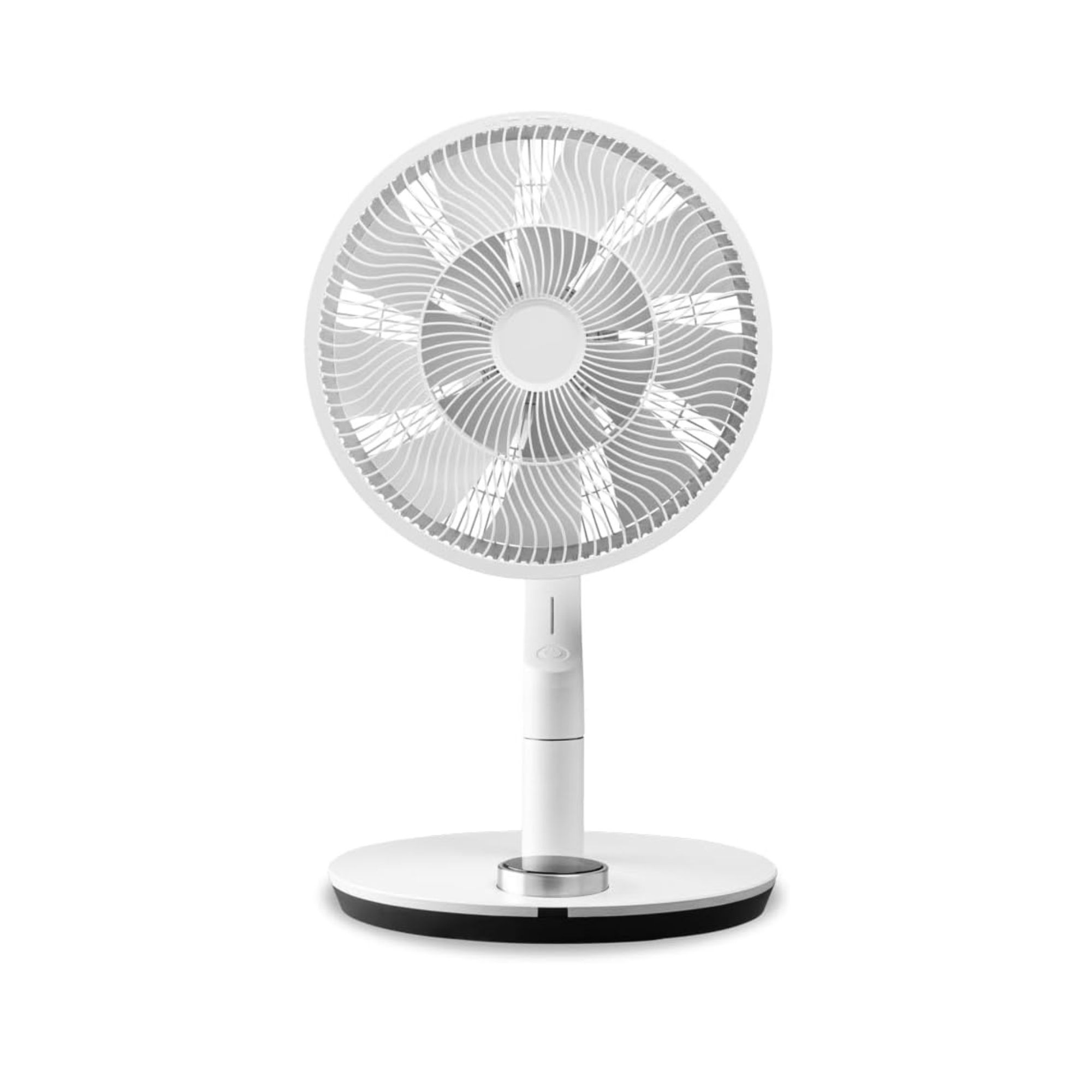Are bladed or bladeless fans better? Experts explain the key differences — and how to choose the right one for you
From cooling power to cost, we settle the bladed vs bladeless fan debate

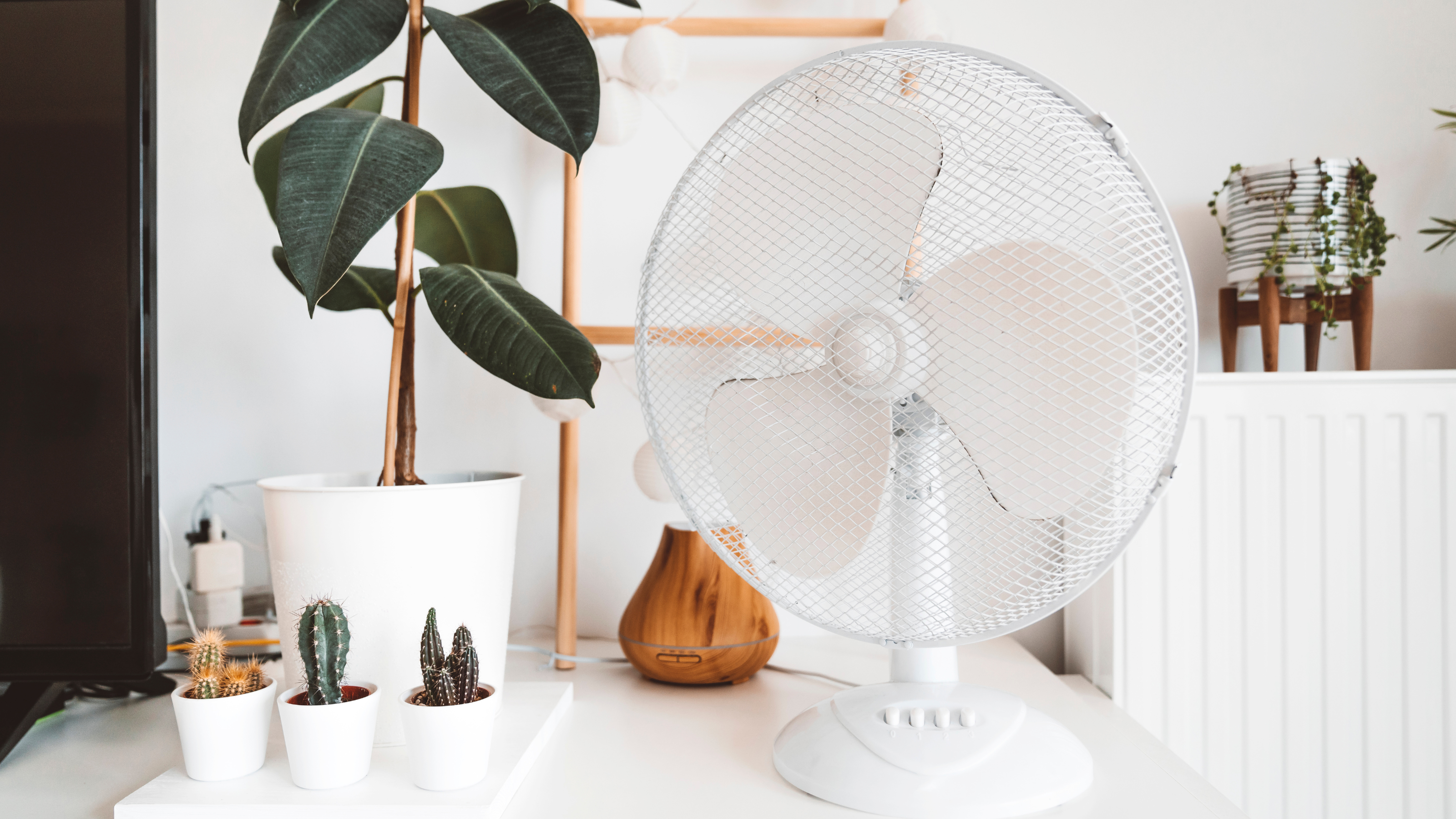
A decent fan can be a lifesaver in sweltering weather, but with so many different options out there, it can be difficult to know which one to choose. And when it comes to bladed vs bladeless fans, you might be wondering: is one better than the other?
The best fans – whether bladed or bladeless – each have their own pros and cons, from how easy they are to clean to noise levels. Ultimately, the right one for you will depend on your lifestyle, budget and space.
Not sure which type of fan would suit you best? Thankfully, I've got the answers for you! I've spoken to the experts to find out everything you need to know – from cooling power to cost – so you can pick the perfect fan for your home.
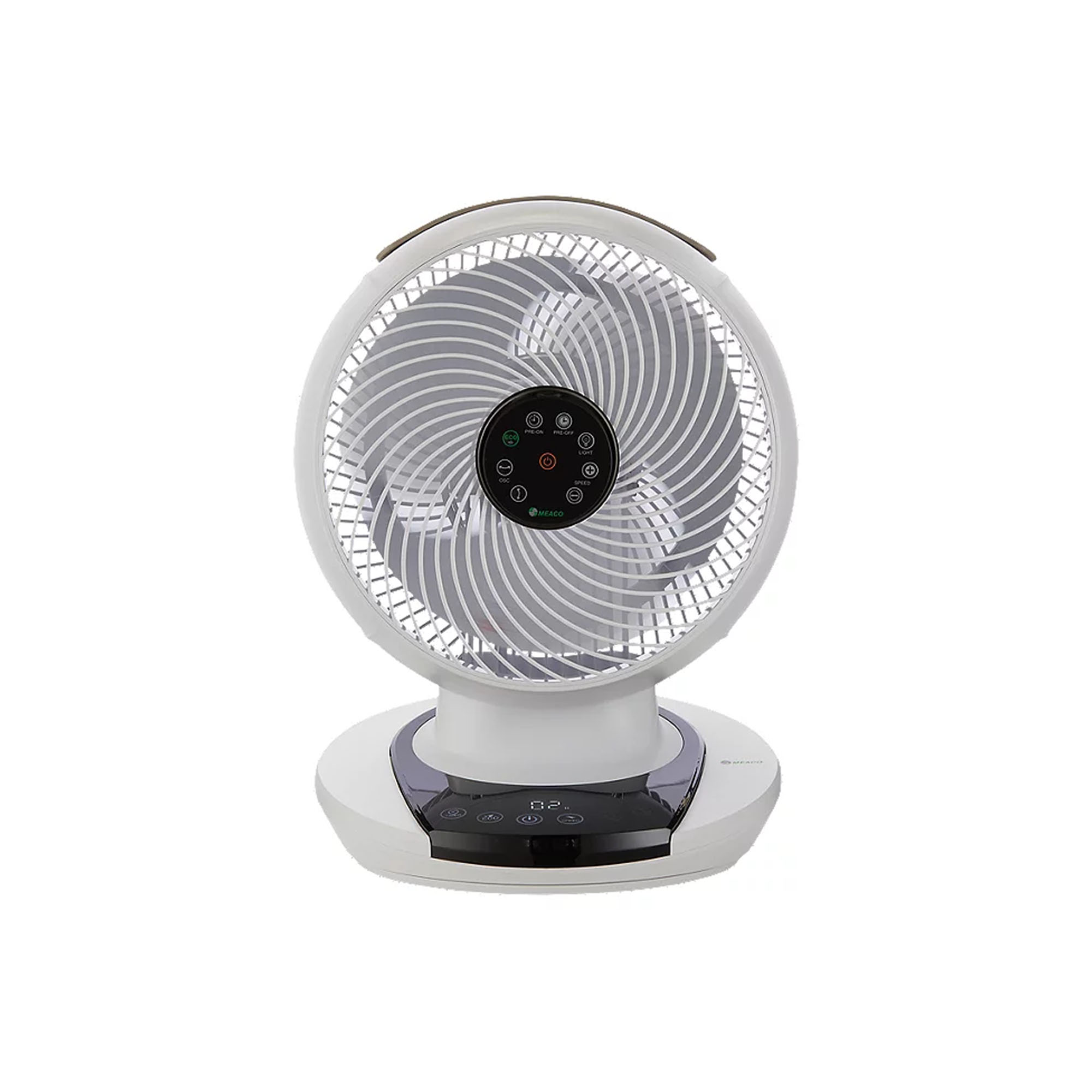
Powerful, quiet, and easy to use, the MeacoFan 1056 Air Circulator requires no self-assembly and is compact and portable, making it our top choice for a bladed fan.
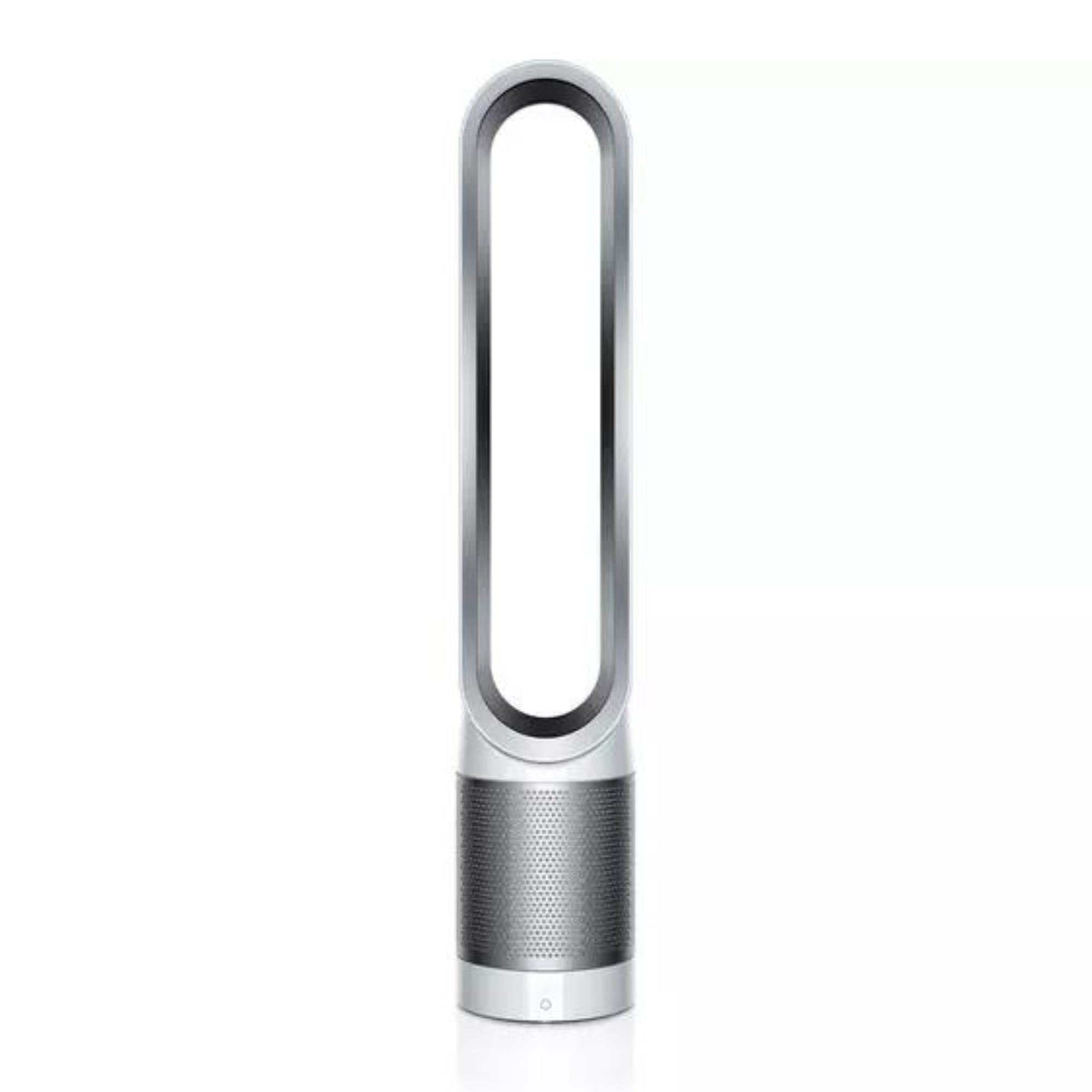
Crowned our best bladeless fan, the Dyson Purifier Cool PC1 not only looks super stylish, but it also has a built-in air purifier to help with any allergies, high dust levels, and even pet dander.
Bladed vs bladeless fan: What's the difference?
First things first, it's worth understanding how bladed and bladeless fans differ. It may seem like an obvious difference, but it's one that can have a surprisingly big impact on everything from sound to how it functions, explains Katie Lilywhite, air treatment expert at AO.com.
'Bladed fans are your traditional fans with spinning blades housed inside a cage, which chop the air and push it outwards in bursts. In contrast, bladeless models differ by holding hidden blades in the base – the air is drawn in and pushed through a circular frame,' she reveals.
'This is then amplified as it exits the rim, which looks like a magic trick, but it’s really just clever engineering,' says Katie.
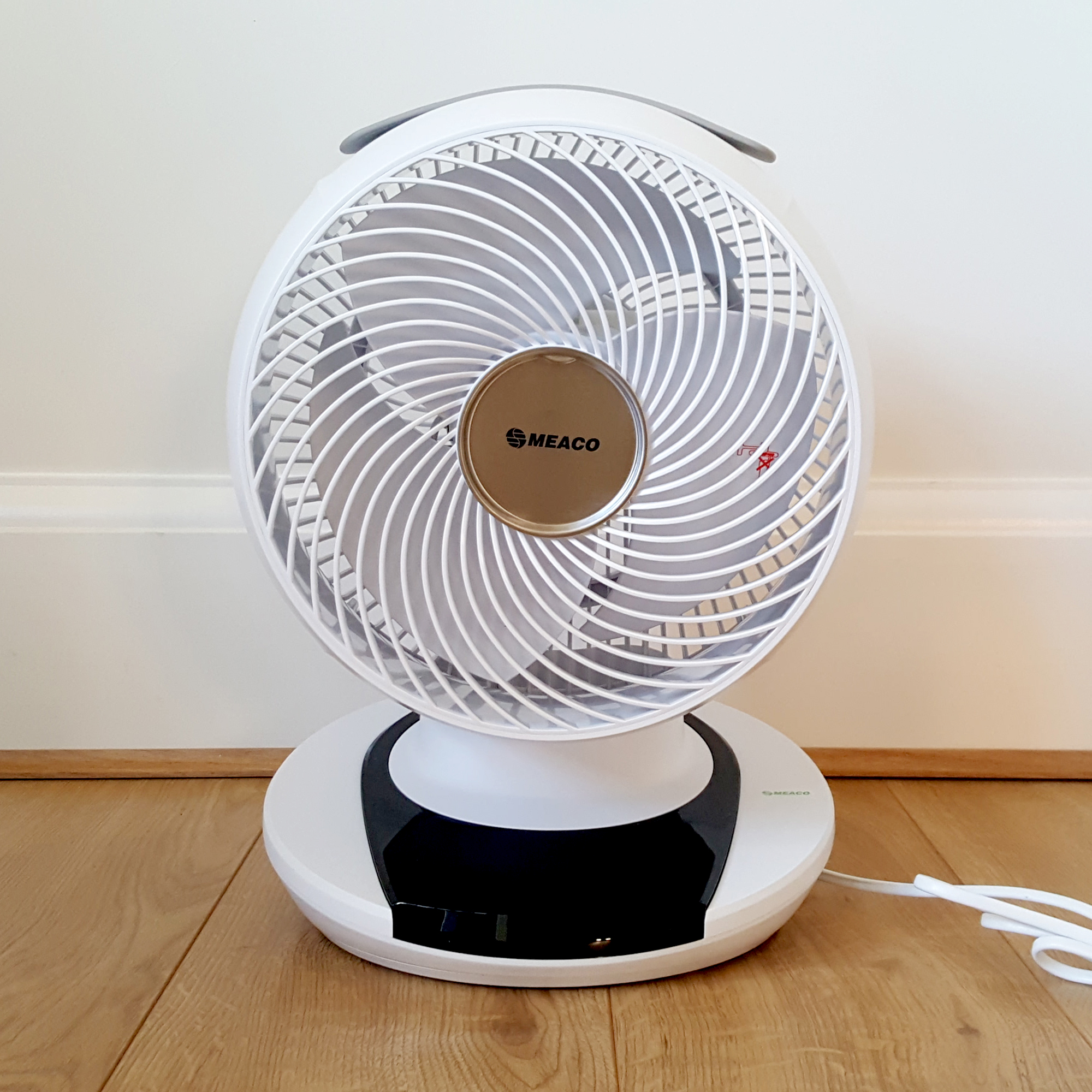

Katie is a key expert at a multitude of appliances, including fans, portable air conditioners, air purifiers and dehumidifiers.
That said, not all bladed fans perform the same, as Matt Ladell, brand manager for Duux, explains.
Sign up to our newsletter for style inspiration, real homes, project and garden advice and shopping know-how
'Advances in fan engineering mean that some modern bladed fans offer enhanced performance and features,' he says. 'While the basic principle of air movement differs between the two types, the performance, efficiency and user experience can vary widely depending on the specific model and technology used.'
Because of this, it's better to look at the features and the effectiveness of these two options - rather than just how they circulate the air.
Bladed vs bladeless fan: Which offers better cooling?
In terms of cooling power, bladed fans tend to deliver a stronger, more direct breeze, which can help you battle hot temperatures and even keep a bedroom cool.
'Bladed fans provide stronger, direct airflow as they move a bigger volume of air quickly and can give you the stronger ‘gust’ feeling,' says Katie. This is perfect if you want a blast of cool air during a heatwave, and fans like the Dreo Polyfan 508s can offer that intense breeze all at once.
Bladeless fans, on the other hand, create a gentler, more consistent airflow that you may find more comfortable. This is something our content Editor, Lauren, noticed when she tested the Shark TurboBlade Multi-Directional Fan, which offers an 'Air Blanket' setting for gentle, bedtime cooling.
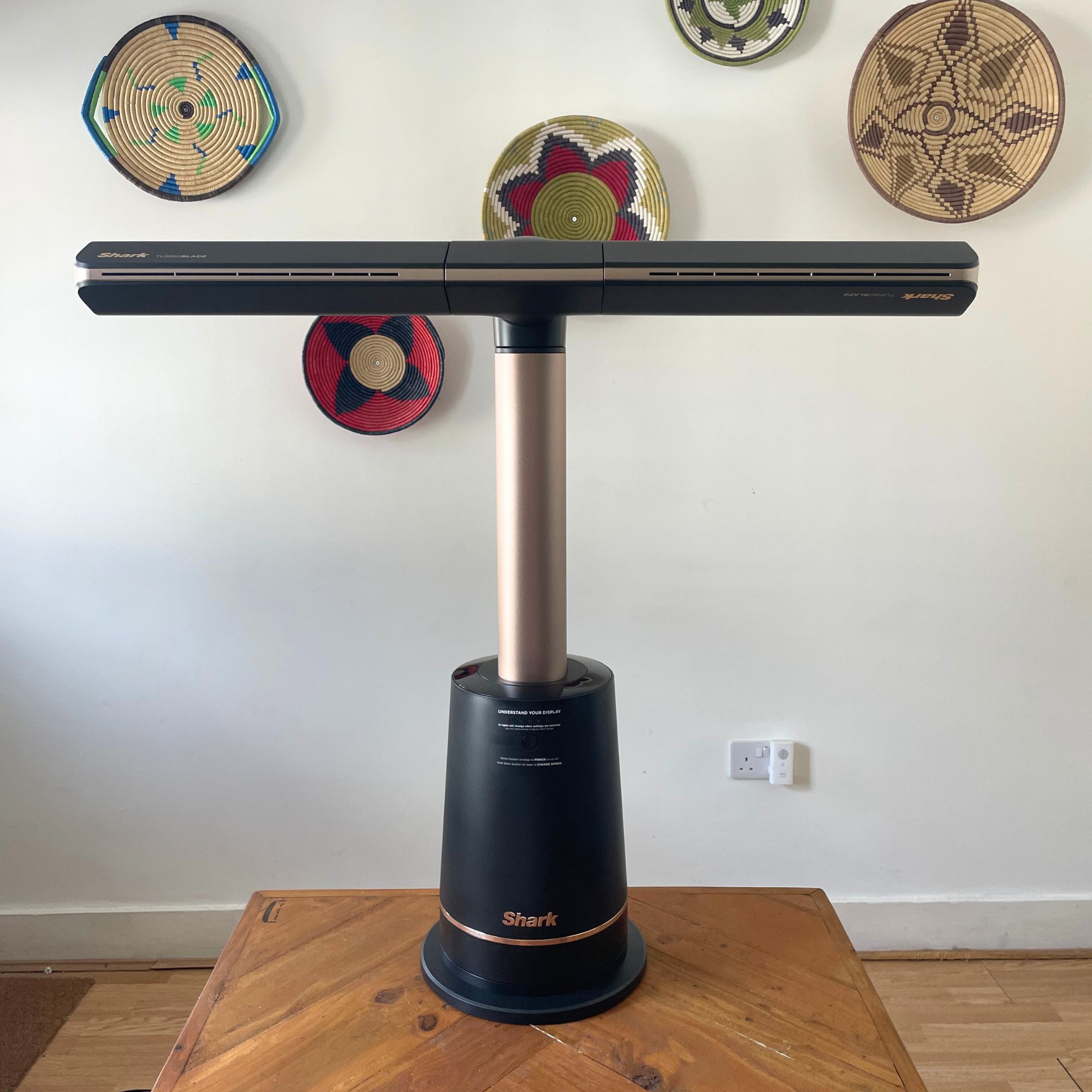
Chris Michael, Managing Director of Meaco, also explains that bladeless fans have to work harder to achieve the same power as their bladed counterparts, which is why the best desk fans are always so popular.
'The air has to take a more complicated path with a bladeless fan – in the bottom, across a filter, turn 90 degrees to move vertically through the fan, turn 90 degrees to leave the fan through the ‘paperclip’. In contrast, a desk or pedestal fan of a similar power level will always move more air because it is a straight journey in and out,' explains Chris.
It's also worth bearing in mind that fan design and functions can also affect the cooling performance – such as whether a fan is oscillating or still or a tower or pedestal. So, it ultimately depends on your temperature preferences.

Chris has been advising on humidity solutions and dehumidifiers since 1991 and is well known within the dehumidifier industry across the world as a lead on innovation and sustainability. With a wealth of experience in the industry, Chris is committed to helping provide low-energy and low-noise solutions appliances that improve the lives of customers.
Bladed vs bladeless fan: Which is safer?
With no exposed blades, bladeless fans are generally a much safer option in the bladed vs bladeless fan debate – particularly for households with young children or pets.
'Because bladeless fans have no exposed spinning blades of note, there’s nothing for curious little fingers or paws to get caught in,' says Shawn Navarednam, environmental care engineer at Dyson.
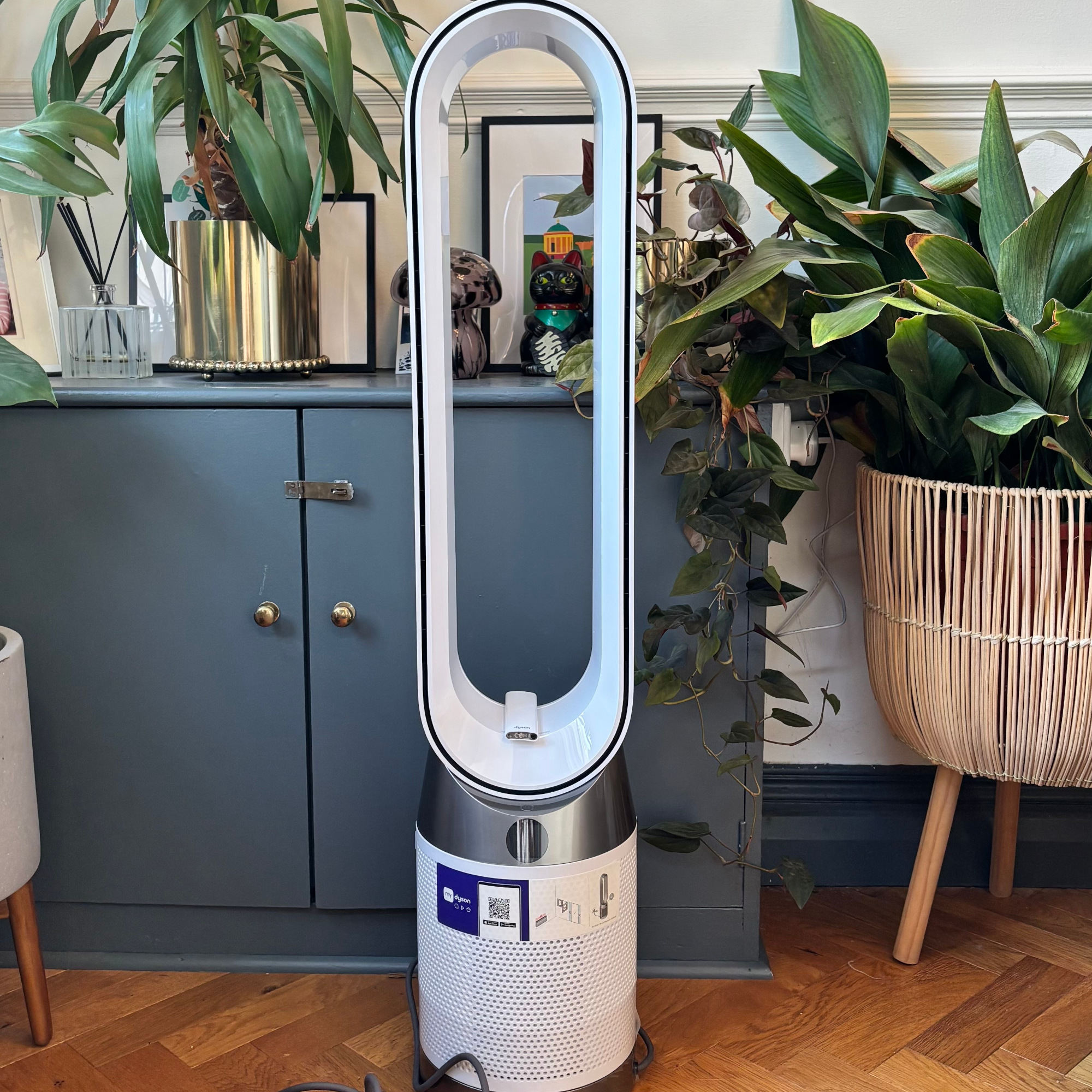
'This makes them a perfect choice for families with young children or playful kittens. Also, they’re much easier to clean – a quick wipe around the ring will see you cleaning your fan in no time at all,' Shawn adds.
That said, if a bladed fan has been designed properly, it shouldn't pose a safety risk, argues Matt from Duux. 'Many designs feature protective grills, stable weighted bases, and auto shut-off functions. All of which prevent tipping and limit access to the blades, offering peace of mind while maintaining high airflow performance.'
Bladed vs bladeless fan: Which is quieter?
Chances are, one of the main reasons you're investing in a fan is to help you stay cool in bed and save your sleep during hot summer nights. But if you struggle with any sort of background noise, it's worth prioritising a quieter model. Generally, this is where bladeless fans have an edge.
'Bladeless fans are typically much quieter than their bladed counterparts. This is thanks to their clever technology, which is designed to cut down on noise levels, particularly at lower settings,' says Katie from AO.com.
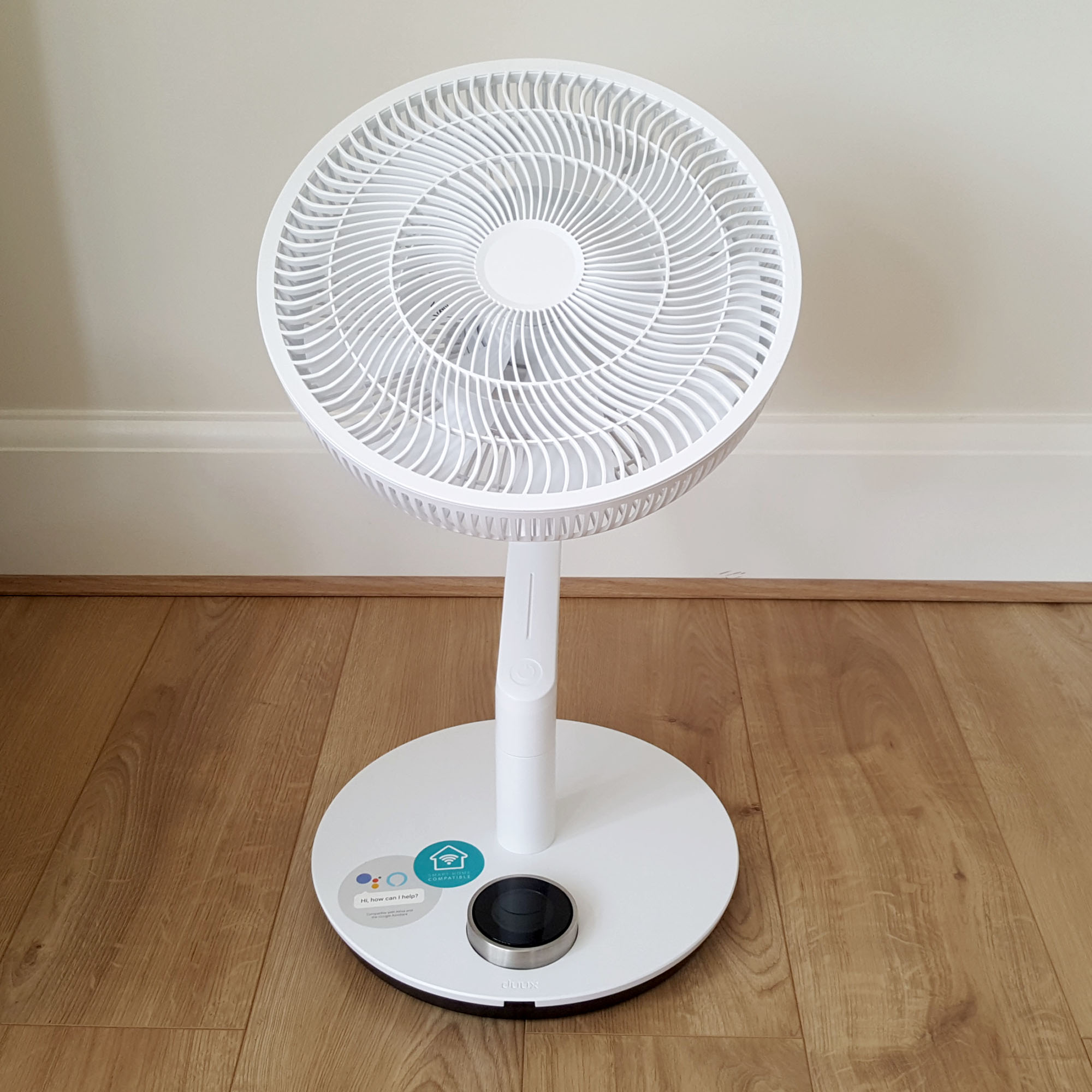
That said, the bladed vs bladed fan debate isn't always clear-cut when it comes to sound. The Duux Whisper Flex Ultimate Fan – which is a bladed model – was crowned the best bedroom fan in our best fan guide thanks to its whisper-quiet operation.
'While bladeless fans are often marketed as quieter, the reality is that innovation in fan engineering plays a far greater role in noise reduction,' says Matt from Duux. Because of this, you should always compare decibel (dB) ratings when buying a new fan.
Bladed vs bladeless fan: Which is more affordable?
The answer to this probably won't surprise you, but bladed fans tend to be more budget-friendly than bladeless models.
While bladed fans often come packed with advanced features (such as air purification), they can come with a fairly hefty price tag. They usually start at around £200 and climb up to £500 – and our top-rated bladeless fan is the Dyson Purifier Cool PC1, which retails at £449.
Bladed fans, on the other hand, are usually more accessible. You can pick up a basic bladed desk fan for as little as £15, although a more premium one can set you back up to £200. Our number one rated fan – the MeacoFan 1056 Air Circulator – offers impressive cooling power and retails for around £100.
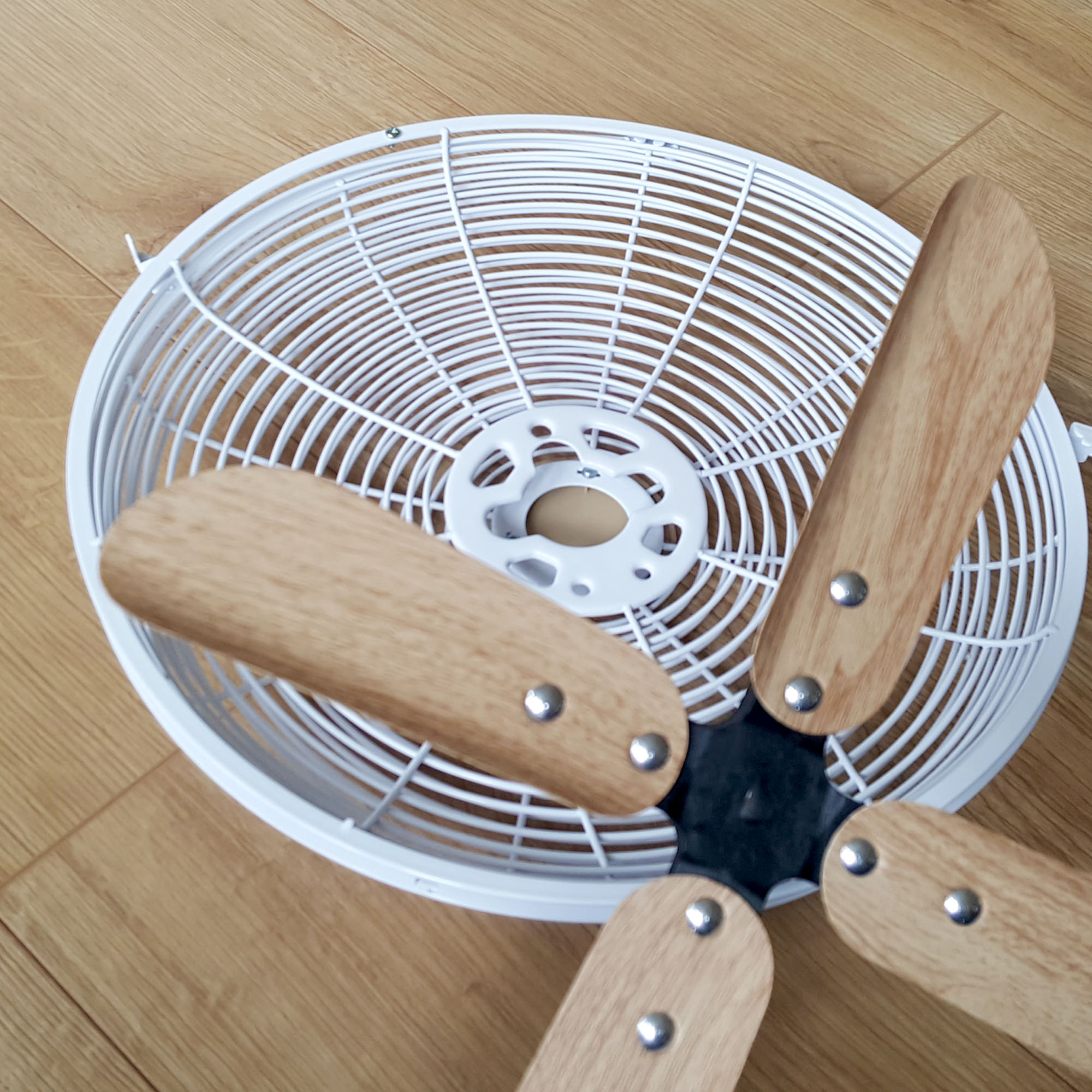
Verdict: Which should you choose?
So, which wins in the bladed vs bladeless fan debate? While it's tempting to crown a winner, the truth is it all comes down to your personal priorities.
If budget is the biggest factor, a bladed fan is your best bet, as it offers solid cooling performance without breaking the bank.
But if you value a sleek design, a quiet operation and hassle-free cleaning, a bladeless fan might be worth the investment.
It's also worth remembering that it's not solely down to the fan you choose. How you use it (and where you place it, for that matter) can make a big difference to how effective a fan is - and even how much it costs to run.
Shop bladed and bladeless fans
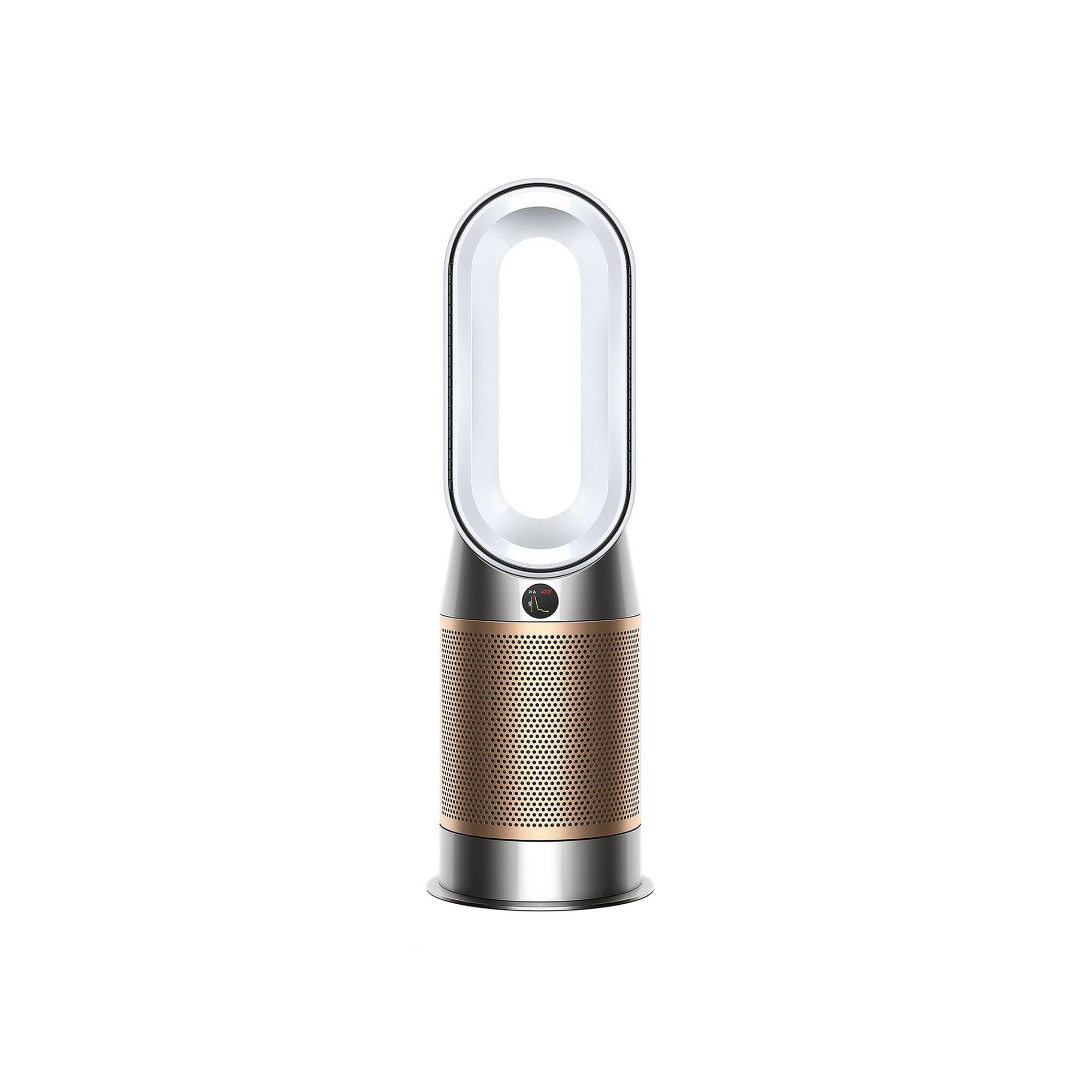
This bladed fan is actually a 3-in-1 appliance, serving as a fan, air purifier and a heater. So, you can customise it to your temperature and home environment requirements, and we gave it an almost perfect score when we reviewed it.
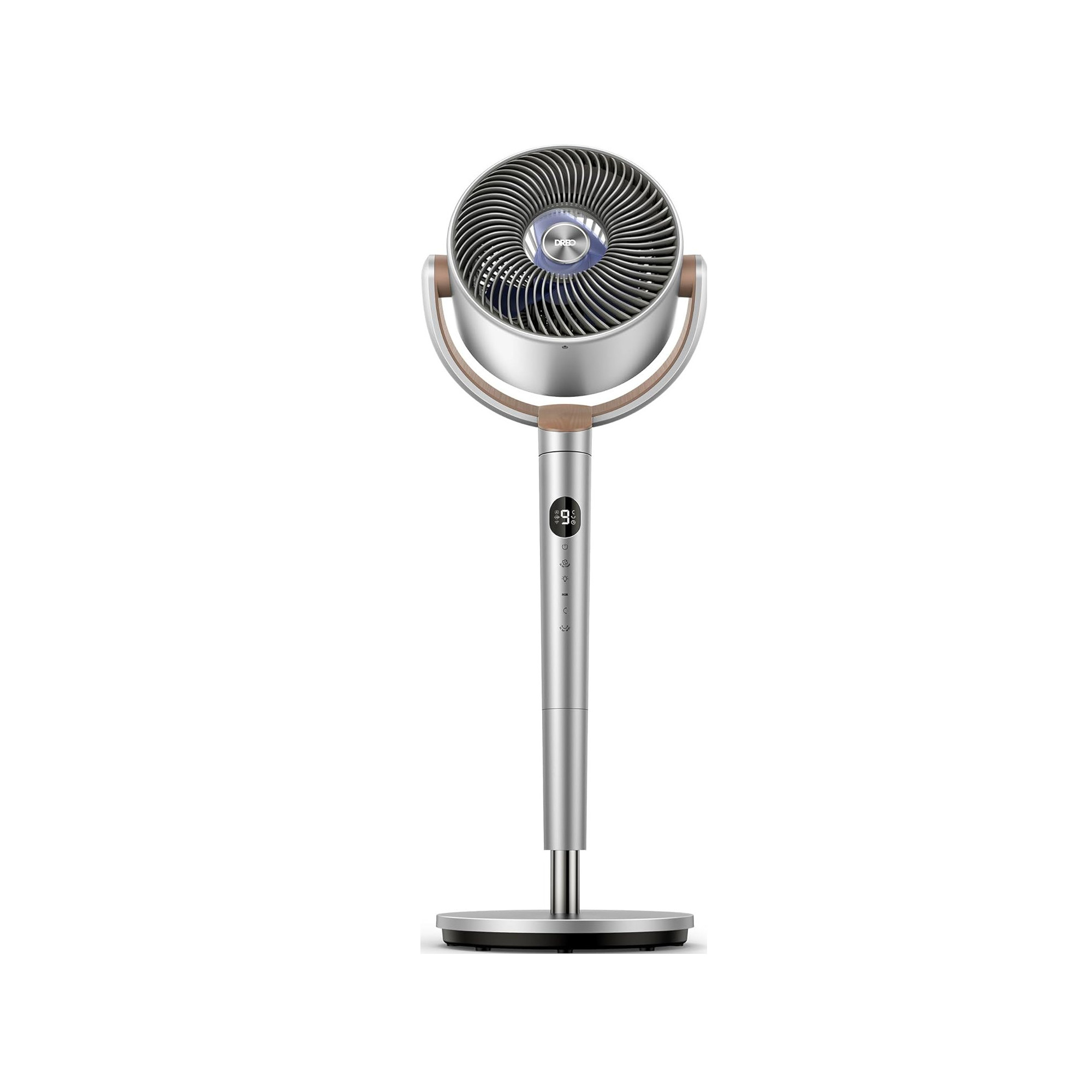
If you're conscious of a fan's running costs, you'll be happy to know that this bladed fan is incredibly energy-efficient, costing under a penny to run each hour. Still, it offers impressive cooling power.
FAQs
What are the disadvantages of bladeless fans?
The biggest drawback to bladeless fans is arguably the cost. They are a significant investment, so if you've got your eye on one, you've probably asked yourself if a Dyson fan is worth it, as this brand is typically the priciest of the lot.
Maintenance can also be a sticking point. Although bladed fans can be tricky to clean, internal components on a bladeless fans can be difficult to access if they need repairing.
Airflow strength can be another issue, explains Katie from AO.com. 'Bladeless fans may not have the brute force that you’d expect with a bladed model. Because they run with a lower airflow, they’re not the best option if you’re quickly trying to cool a large room.'
Does putting ice in front of a fan work?
Putting ice in front of your fan can help to cool a room down as a DIY air conditioner hack, especially in smaller spaces. As the fan blows air over the ice, it picks up cooler moisture and creates a quick chill effect with the air pumped around the room.
'This technique is best used in smaller spaces or if you’re sat right in front of the fan,' says Katie. It won’t lower the temperature of the room like an air conditioner, but it’ll certainly make your life much more pleasant during a heatwave.'
Now you're clued up on the pros and cons of bladed vs bladeless fans, the question is, which one gets your vote?

